How to Boost Your Instructional Coaching Cycles with AI and Video Mentoring
With teacher shortages across the country, many districts are turning to new pools of talent to source teachers. Hernando County School District in Florida is no exception. In fact, approximately 85 percent of its new teachers in recent years have been alternatively certified.
That means they have come from non-traditional educational backgrounds and that meant these new teachers were going to need more instructional coaching cycles than traditionally trained teachers.
And like many other districts, there are constraints for Hernando on how many coaches are available to support these new teachers. Watch her presentation in the video below or read on to learn from a district leader how they’re using technology to ensure that their new teachers receive more and more personalized support throughout the year.
Providing enough instructional coaching for teachers without enough coaches
Hernando County has more than 1,700 teachers and 100 administrators, with an average of 170 new teachers joining each year.
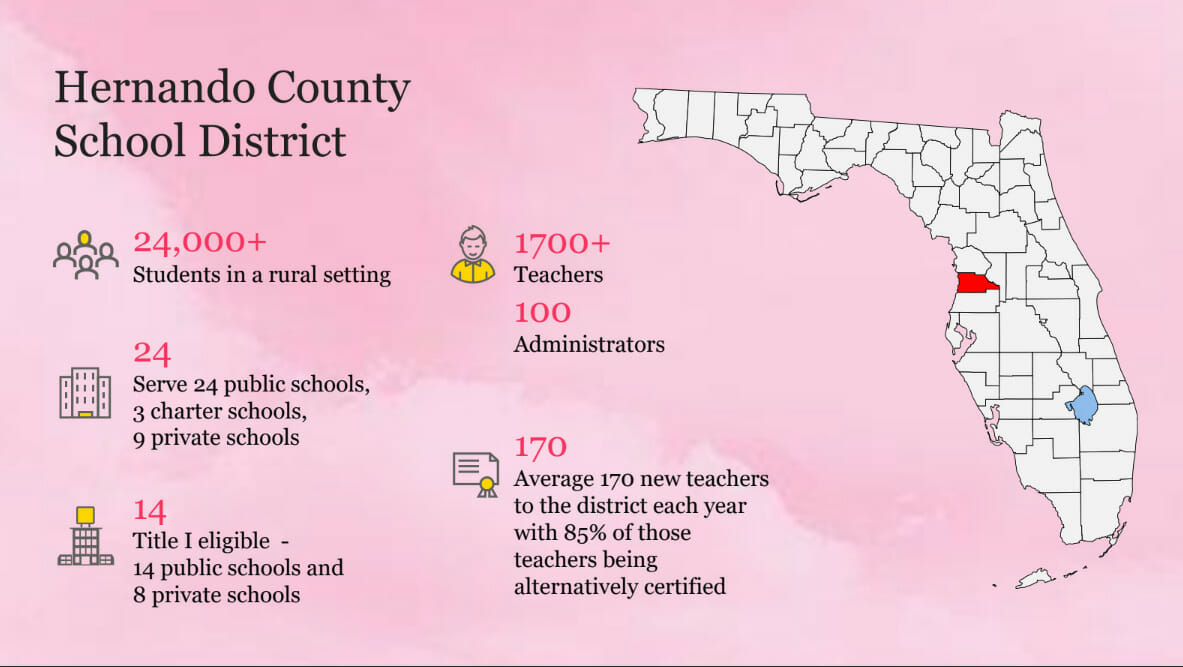
With that many new teachers starting each year, 85 percent of whom came from a non-traditional teaching background, the district administrators were challenged with how to mentor and coach these (and other) teachers effectively with limited resources.
Filling teacher vacancies is one challenge. Helping those new teachers be effective is another.
As discussed during her presentation at Learning Forward Florida Fall Conference, Hernando County School District’s Supervisor of Professional Development Dr. Paula Clark had to think creatively to help her teachers.
How could she increase the amount of instructional coaching cycles given to new teachers without adding more staff or blowing a hole in the district’s budget?
The solution came in the form of video reflection and AI coaching.
The results?
A 2x increase in instructional coaching cycles.
Previously, teachers were only receiving formal feedback twice per year. With the new model, teachers are participating in four coaching cycles throughout the year.
Paula was joined by Adam Geller, author of “Evidence of Practice: Playbook for Video-Powered Professional Learning,” as she shared her story.
Video coaching for teachers drives deeper conversations
Facing the challenge of providing adequate coaching and mentorship to a large pool of non-traditional teachers, the district began expanding the traditional in-person coaching model to include video-based coaching in 2016.
This approach allowed administrators and mentors to provide more robust, actionable, and measurable feedback to teachers. Using video also facilitated reflective practice among teachers, enabling them to view classroom interactions from a student’s perspective.
“And for some teachers, that’s a really big aha (moment)… You get into those reflective conversations about ‘What were my students doing?’ ‘Were my directions clear?’ So, you’re really able to utilize that and get into some of those deeper conversations,” Paula said.
Self-driven teacher observation and classroom action planning with AI Coach
While video coaching helped Paula and her coaches mentor teachers more effectively, she wanted to go further.
“With (video coaching) we made some significant strides with first-year teachers, but we were really looking for more ways to be innovative and improve opportunities for better growth in the program,” Paula said.
But with just 135 active mentors and 278 mentees, the math was not easy.
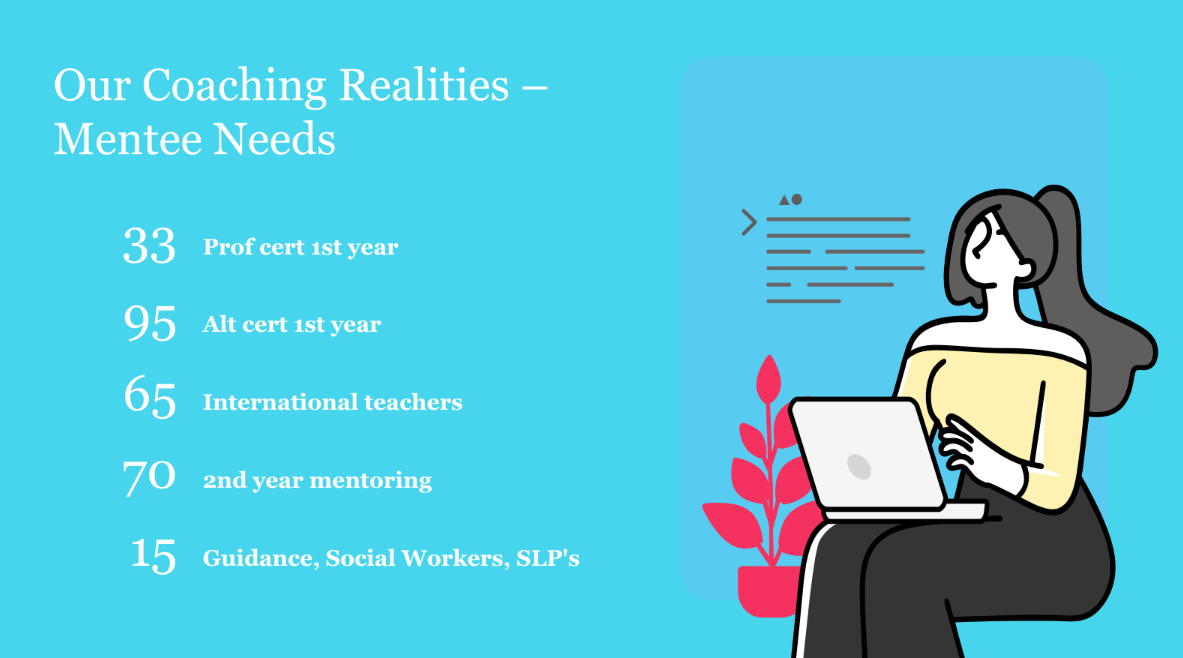
How could she provide more support without stretching the mentors even more than they already were?
To provide additional professional learning support to new teachers and to ensure they were growing between formal in-person coaching sessions, the district started using the AI Coach platform.
The AI Coach platform provided a structured yet flexible framework for teachers to reflect on their practice, set actionable goals, and receive immediate feedback—all in a self-paced manner. With AI Coach, Paula could provide additional instructional coaching-style conversations to teachers without additional workloads for coaches and mentors. Teachers could keep learning in between their formal observations.
A complete instructional coaching cycle with immediate, personalized feedback
If a district is already using the Impact Cycle, Evocative Coaching, Cognitive Coaching, or another framework, the experience inside the AI Coach platform, is meant to blend seamlessly with the existing coaching or observation models. It’s modeled on the routines of many coaching protocols and the best practices of Improvement Science.
The AI Coach platform encapsulates a complete coaching cycle comprising four stages: analyze, reflect, enact, and impact. Teachers upload classroom videos onto a private space within the platform and are guided through self-reflection and action planning in a step-by-step manner.
The platform’s virtual coach, named Edie, assists teachers throughout the instructional coaching cycle.
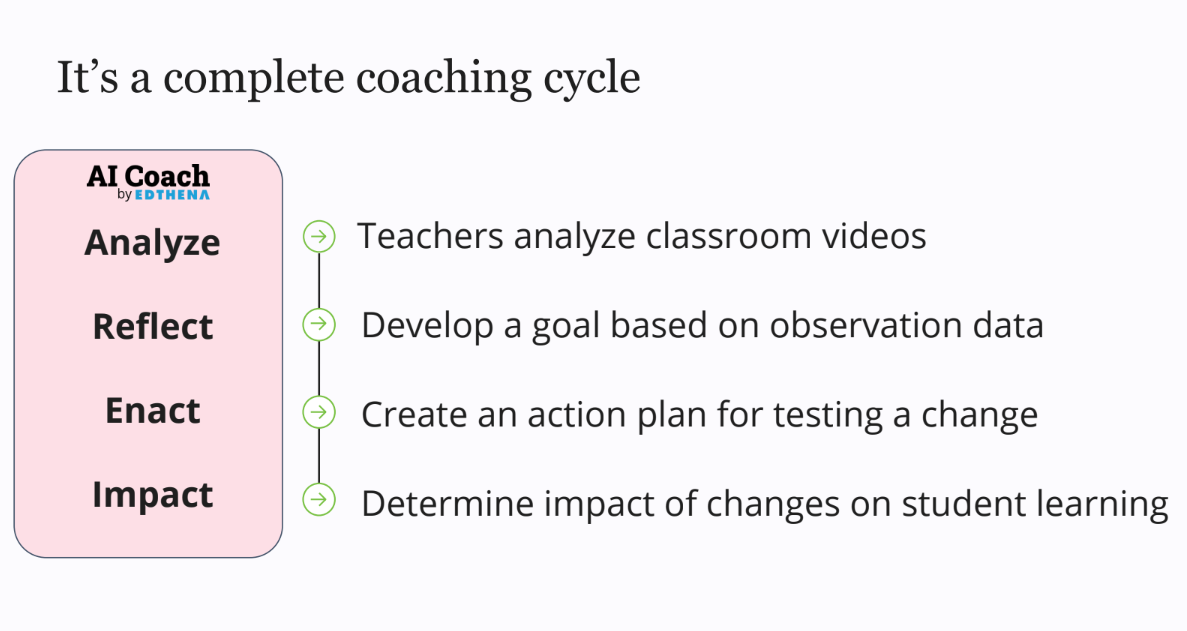
The beauty of this system, according to Paula, lies in its ability to provide immediate, personalized feedback and resources, thus accelerating the reflective and improvement cycle for teachers.
In addition, the privacy of the platform, ensuring that the videos are accessible only to the respective teachers and designated staff, fosters a safe space for genuine self-reflection and growth.
“AI Coach is really providing us with a way for teachers to work independently and take that into practice, then take that practice into those learning cycles with a mentor to continue the work all year long. It was easily incorporated with what we had already designed in our program,” she said.
How AI Coach supports teacher self-reflection
- Provides customized recommendations for how to observe for key classroom skills
- Helps teachers define their strategies and timelines
- Offers curated resources related to prioritized goal areas
- Sends reminders for tasks
- Automatically compiled Reflection Log which can support in-person coaching
An extension of instructional coaching, not a replacement
Paula noted that this innovation in teacher coaching and mentorship was not just a wild guess; it was a well-thought-out initiative backed by thorough exploration and the collective effort of the district’s coaching team. They leveraged this technology to enhance and expand instructional coaching, not replace the existing model.
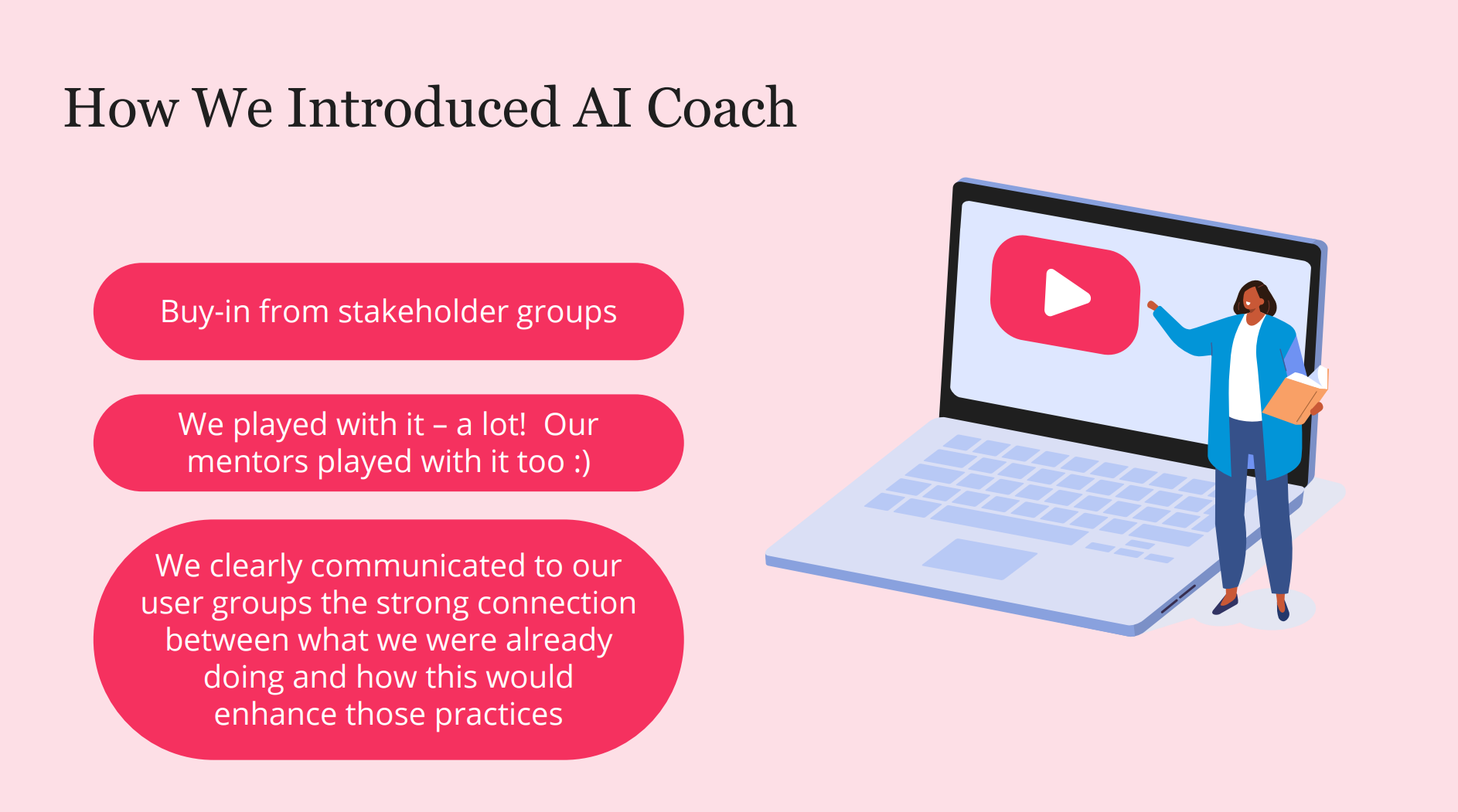
The integration of AI Coach with the existing mentorship model has now created a more enriched, continuous, and self-driven professional development pathway for teachers in Hernando County.
The AI Coach doesn’t replace the human mentor but rather complements and extends the mentor’s reach, ensuring that teachers, irrespective of their background, receive the support they need to thrive in their roles.
These tools allow teachers to work independently and receive feedback without waiting for formal in-person visits. Teachers can upload videos, interact with Edie, and analyze their teaching techniques all on their own.
On-demand, personalized instructional coaching driven by teacher goals
Adam noted that importantly, this is not a one-size-fits-all coaching model. Teachers have a variety of resources available to maintain autonomy in their growth journey. They are choosing their path forward and the coaching platform helps by providing curated resources and logistical support like reminders, reflection logs, printable reflections for meetings, and a certificate of process completion.
The overall goal of the AI Coach platform is to enable teachers to self-reflect and improve their teaching methods with guidance, without being overly prescriptive. The platform emphasizes individualized coaching methodologies, highlighting the importance of teachers making decisions for themselves to ensure genuine adoption and implementation.
Now teachers receive instructional coaching in four cycles, not just two
The changes are already making an impact in Hernando County. In fact, the technology-based resources vastly accelerated the traditional coaching process and allowed teachers to receive more support when they needed it. As previously mentioned, by leveraging video coaching and AI coaching, Paula was able to double the number of coaching cycles teachers engaged in.
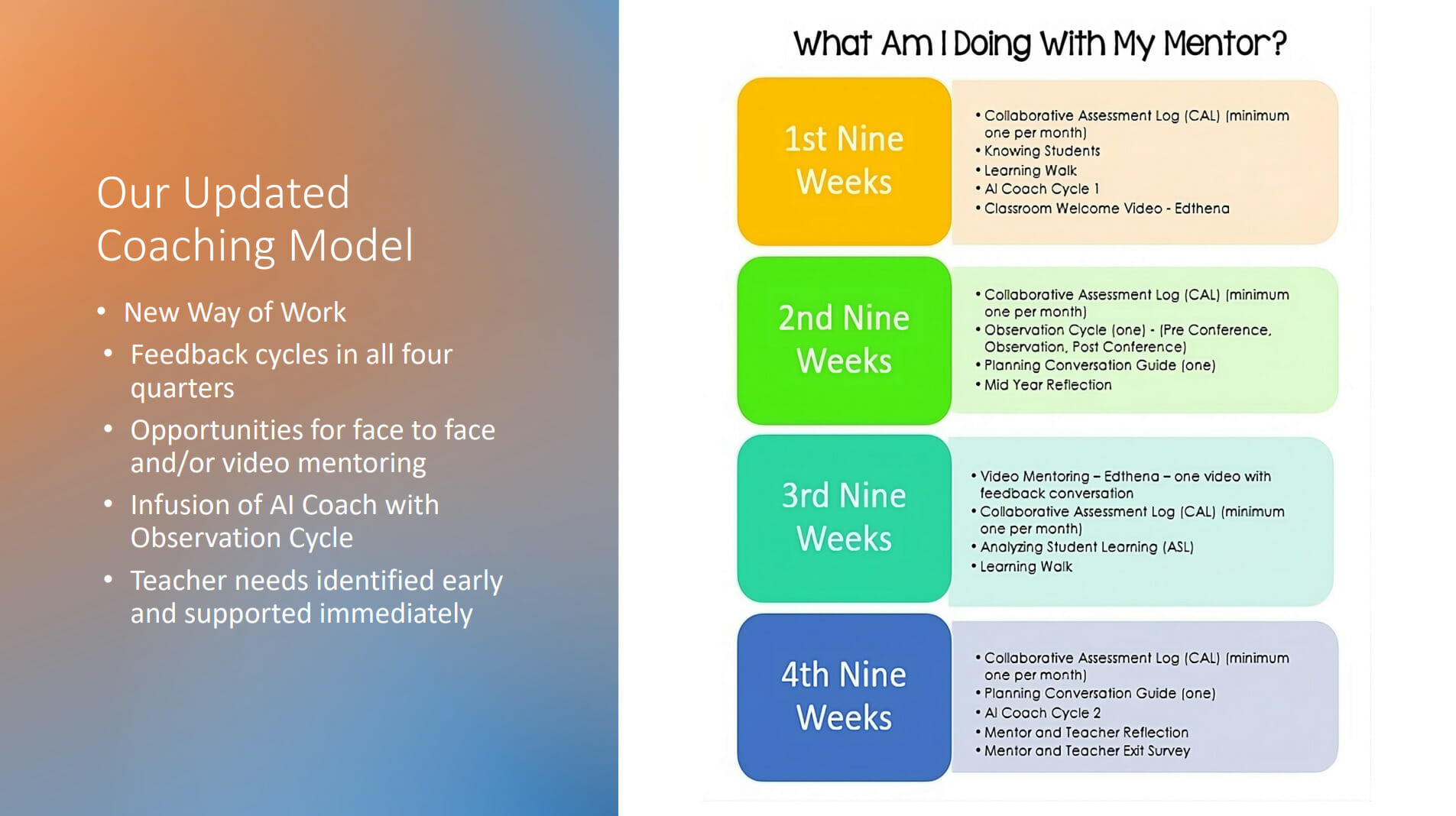
“I have feedback in all four cycles, where previously there was only feedback in two cycles,” she said. “(That) meant half of the year, they didn’t get in-person or any kind of actionable feedback.”

